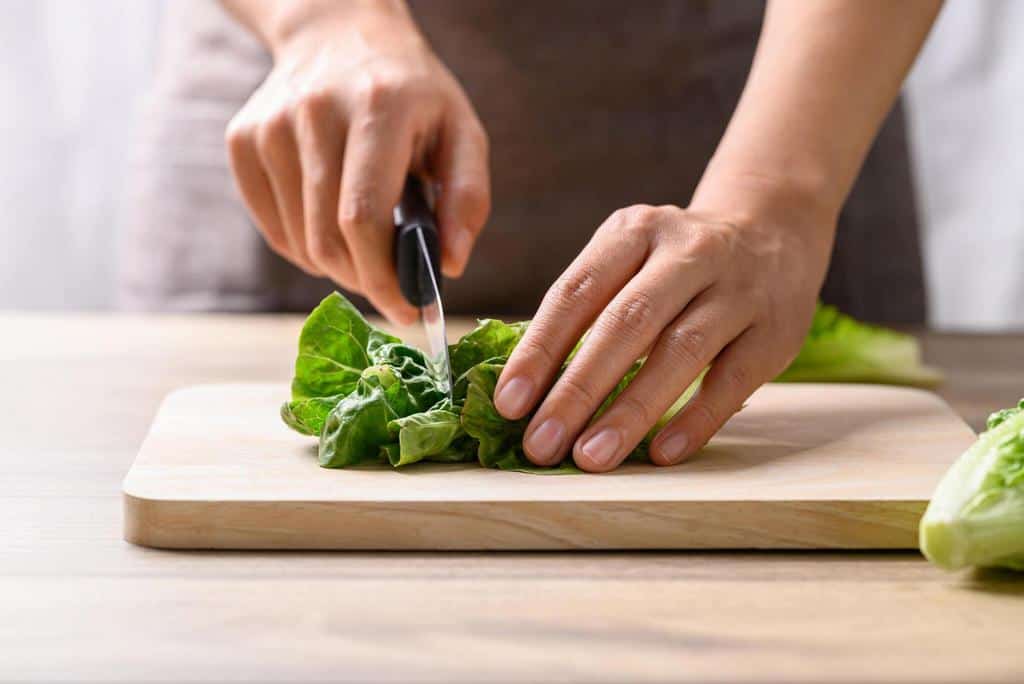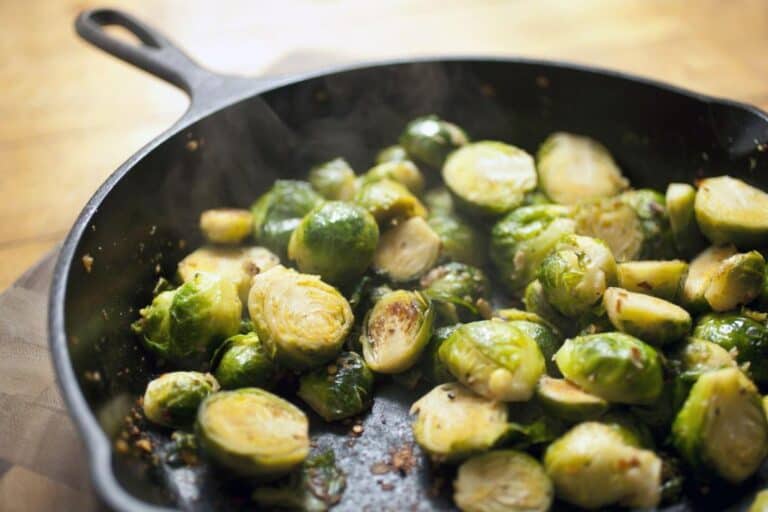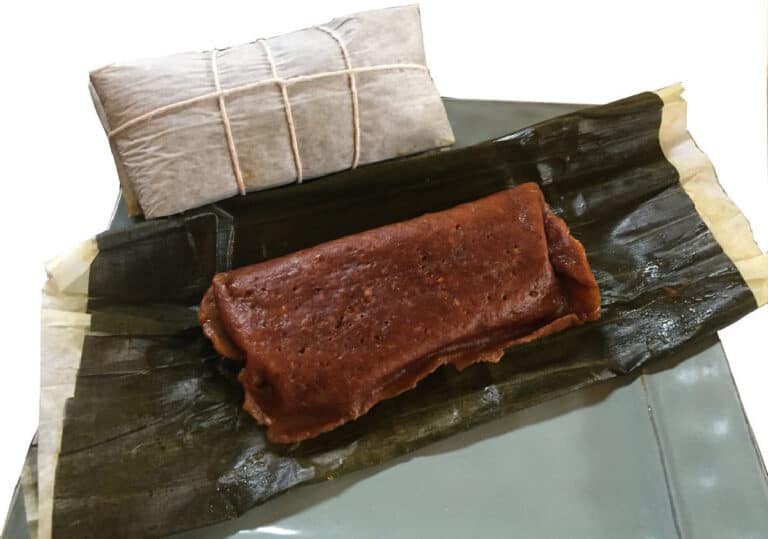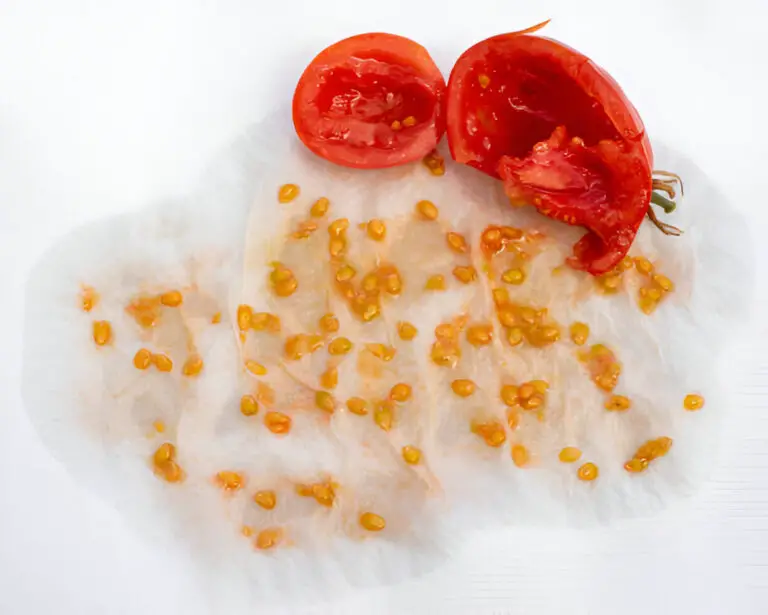Hand-torn or Cut with a Knife? Best Method for Green Lettuce

On your kitchen counter is a bright, crisp head of romaine lettuce, ready to be made into a tasty salad or a crunchy addition to your sandwich. Your mind is not fully on what to do as you reach for the knife. Should you cut or tear this leafy green giant?
In the world of cooking, there are two strong opinions on this seemingly unimportant task. Supporters of each side passionately defend their preferred method. There are real reasons why some people swear by carefully slicing each leaf and others swear by the gentle art of tearing. It is not just a matter of personal preference.
People who work in the cutting room believe it leads to accuracy and consistency, making sure that every bite has the same mix of tastes and textures. Tear fans say ripping leaves keeps their natural fibers and stops wilting. This makes the dish look rustic and appealing.
This tug-of-war in the kitchen is not just about tradition or personal preferences; it is also about taste, nutrition, and even how easy it is to make meals. Hold on tight as we embark on a culinary adventure to determine whether to cut romaine lettuce by hand or by blade. Trust me, the answer might surprise you as a chef.
Taste and Texture Analysis
In the age-old culinary debate, the question is: should you cut or tear romaine lettuce? The impact on taste and texture is crucial to consider. Cut the leaves with a sharp knife. This may result in cleaner, more even edges. They can improve the look of the dish.
However, some argue that this process can cause browning at the cut surfaces due to oxidation, potentially affecting both the flavor and appearance of your dishes.
On the other hand, tearing romaine lettuce by hand might seem less precise but could actually enhance the textural experience. Tearing allows for natural breaks along cell walls. This is better than creating clean cuts. Clean cuts expose more surface area to the air and cause moisture loss. This preservation of cellular structure through tearing can maintain a crispier texture and possibly even amplify the freshness of each leaf in your salad or wrap.
As we weigh these points, it becomes clear that our choice between cutting or tearing isn’t just about technique. It’s also about making every bite we take better.
Preserving Nutrients: A Cut Above or a Tear Apart?

When it comes to the nutritional aspects of romaine lettuce, the choice between cutting and tearing can have a significant impact. Research suggests that tearing lettuce may result in fewer nutrient losses compared to cutting. The act of tearing exposes less surface area to oxygen, which can help retain more vitamins and minerals that are sensitive to air exposure.
Both methods cause nutrient loss due to oxidation. But, if you want to preserve as many nutrients as possible in your leafy greens, tearing is slightly better.
Additionally, the manner in which lettuce is cut can also influence its nutrient content. Chopping with a knife speeds up browning reactions. This can degrade some vitamins, like vitamin C.
Tearing by hand is gentler on the leaves. It minimizes damage, which could help them keep their nutrients longer. So next time you’re preparing your salad, consider giving tearing a try – your body might just thank you for those extra retained nutrients!
The Visual Art of Lettuce: Cutting vs. Tearing
When it comes to the aesthetics of a dish, the method used to prepare ingredients can make a significant difference in how it is perceived. For romaine lettuce, slicing or tearing creates distinct looks. These appeal to different tastes and styles.
Imagine a salad with neatly chopped lettuce versus one with torn pieces. Both evoke different feelings and set the tone for a whole meal. Cutting may offer precise edges and uniform shapes, ideal for modern presentations where symmetry plays a key role.
Tearing introduces irregularities. These speak of authenticity and simplicity. Many people who like natural imperfections over structured patterns, like them.
The choice between cutting and tearing is about more than just beauty. It extends into the artistry of culinary creations. Just as a painter selects their brush strokes carefully to convey emotion and movement on canvas, chefs deliberate over how each leaf of lettuce will contribute visually to their composed dishes.
Cooks may aim for elegance with fine knife work or seek organic allure via hand-torn elements. Each slice or rip carries intentionality that shows on plates like strokes in a masterpiece. It’s an edible tableau for discerning eyes to savor. Then, delighted palates follow.
Practical Tips for Romaine Lettuce: Cutting vs. Tearing
When it comes to deciding whether to cut or tear romaine lettuce for your dishes, the recipe at hand can be a guiding light.For hearty salads with bold flavors and textures, like Caesar or Greek salad, cut the lettuce into bite-sized pieces. Slicing through the leaves allows for better distribution of dressings and toppings. This ensures each forkful has a harmonious blend of ingredients.
On the other end of the culinary spectrum are delicate dishes like summer wraps or chilled lettuce cups, where tearing becomes an art form. Ripping the leaves by hand is gentle. It keeps their natural structure and charm. It also keeps the flavors ultra-fresh.
This method works wonders when you aim to showcase the vibrant green hues and leafy elegance of romaine without overpowering lighter fillings or garnishes. So, let your recipe whisper – should I cut or tear? And let that answer guide you towards culinary perfection on every plate.
Expert Opinions on Handling Romaine Lettuce
Ever wondered what top chefs and culinary experts have to say about the age-old question of whether to cut or tear romaine lettuce? Well, the verdict might just surprise you.
Renowned chef Julia Smithson, known for her innovative approach to salads, swears by the art of tearing. Tearing romaine lettuce preserves its delicate structure. It also releases natural flavors that cutting may inhibit,” she explains. According to her culinary expertise, tearing also lends a rustic touch that enhances the overall dining experience.
On the flip side, Chef Miguel Rodriguez takes a different stance, firmly rooted in precision. Cutting romaine lettuce allows for consistent bite sizes and presentation control, he asserts. Chef Rodriguez emphasizes uniformity and aesthetics in his dishes. He thinks cutting makes for a cleaner finish. This is suitable for diverse plating styles.
These contrasting perspectives from culinary maestros add depth to the debate over handling romaine lettuce, leaving home cooks with food for thought as they navigate their own kitchen adventures.
So there you have it. Expert voices echo through kitchens worldwide. They have divided opinions on how best to handle this leafy green treasure. You might align with Julia’s intuitive tearing or lean towards Miguel’s calculated cuts. But one thing is certain:. When it comes to romaine lettuce, there’s room for flair and insight.
Why Should You Cut Instead of Tear Romaine Lettuce?
Here’s the thing about tearing lettuce: While it may be fun to rip it apart by hand in a large bowl, it is almost impossible to get the lettuce pieces to be uniform. You’ll get large and small chunks, meaning that if you’re trying to serve equal portions to guests, you’re going to have a hard time.
There is also the question of heat. Your hands produce a decent amount of heat, your palms in particular. This will warm the lettuce, and romaine is best served chilled. It has a larger water quantity than other varieties of lettuce, so the colder the romaine, the crispier it will be. There are some schools of thought that say lettuce will brown faster once it has been cut with a blade. But there is no evidence to verify this. No matter how you cut or tear the lettuce, it will turn brown at the same rate.
Once you’ve cut the romaine into bite-sized pieces, wash it, and ensure it is thoroughly dry before dressing it. If the lettuce is too wet, the dressing will get too watery and won’t stick to the leaves well. The result should be a fantastically uniform presentation. If that is what you are going for, the only way to achieve it is with a knife.
What Is the Best Way to Keep Romaine Lettuce Fresh?
Keeping romaine lettuce fresh is easy with proper storage techniques. To maintain its crispness, ensure there is adequate air circulation and a hint of moisture. The best way is simple and effective. Use a sturdy glass or plastic container lined with a few paper towels. Scatter the romaine leaves on top of the paper towels, and then cover the container with a matching lid before placing it in the refrigerator.
This setup allows the lettuce to breathe while also preventing excess moisture buildup, which can lead to wilting. The paper towels help absorb any excess moisture, keeping the lettuce fresh for longer periods. Follow these steps. Then, you can enjoy crisp and vibrant romaine lettuce in your salads and sandwiches all week.
| Related: Lettuce Storage Debate: Airtight Container vs. Ziploc Bag |
Making the Cut: To Slice or Tear Your Romaine?
We are almost done with this culinary journey. We’ve seen the big difference between cutting and tearing romaine lettuce. But, we must distill the wealth of information we’ve found. The debate, it seems, comes down to a matter of personal preference intertwined with various factors that influence taste, texture, and nutritional aspects.
Cutting your romaine may make it look more uniform. It can also make it more practical for dishes that need precise shapes or sizes. Conversely, tearing could preserve more of the lettuce’s natural integrity, potentially enhancing its crispness and overall mouthfeel.
Research findings have shed light on different facets of this age-old culinary question. Cutting might expose more surface to oxidation and nutrient loss from air. Tearing makes jagged edges. Some argue that these edges trap dressings better for a stronger flavor.
It comes down to individual choices. These are based on desired taste or looks. This is when serving a salad or using romaine in recipes.






